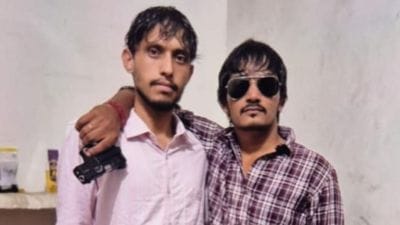India’s best fishermen drop anchor & pride, wait for NGO handouts
His skin is leathery from decades of sun and salt. His arms are muscular from years of hauling seine nets. T Stanislaus (70) looks like he c...

His skin is leathery from decades of sun and salt. His arms are muscular from years of hauling seine nets. T Stanislaus (70) looks like he could jump into a traditional vallam and make a three-month-long fishing migration to haul in pomfret off Maharashtra’s Konkan coast.
After all, great sea journeys in flimsy traditional craft are—or were—the trademark of the fishermen of Colachel, a natural harbour framed by low hills and sandy bea-ches, 20 km north of Kanyakumari.
Stanislaus may be illiterate, but he’s made that journey more often than he remembers, navigating hundreds of miles by the stars and wits. He could predict the currents, adroitly picking the Vanuvadu, the east-west sweep that signals a good season.
But not today. And, says Stanislaus firmly, never again.
‘‘Since last year, I have not been out to sea, and I will not go ever,’’ Stanislaus says quietly. He shudders as he recalls how the tsunami swept him out of his house, stripped him naked and rolled him over the red-tiled, closely packed houses of his town of 10,000. He survived by clinging to a roof, but lost no one, unlike 340 other less fortunate families.
That doesn’t matter. All across the tsunami-ravaged coasts of India today, there were prayers, roadside memorials—some rags and wooden platforms with laminated photos, some granite markers with the carved names of some of the country’s 12,500 dead—quiet processions and quieter vows of resolve. Almost entirely Roman Catholic with a profusion of churches and parishes, Colachel too had its masses, ringing bells and frequent exhortations by parish priests to the community to put individual wants aside and pull together.
Sadly, acknowledges Dr P Maria Soosai, a senior priest and coordinator of tsunami relief and rehab, it isn’t working very well. Voices like Stanislaus’ fill the narrow lanes of Colachel, an undiminished crescendo of gloom and constant demands for more help.
‘‘I lost more than six nets (each Rs 20,000 at least), I got only one,’’ complains T Francis (45), a fisherman whose fibre-catamaran has been replaced by the Catholic Kottar Social Service Society, which has also spent Rs 1.2 crore on new nets.
‘‘I use different nets for various fish, so what now?’’ And so the complaints go: we were promised Rs 32,000, why did we get only Rs 10,000 (because the entire payment was meant for families of the dead, when the entire town clamoured for relief, it was divided). The demands are continuous and vociferous.
Just this morning an overflowing congregation at the St Jude’s church quietly heard Fr Soosai urge the community to begin helping itself. Francis reluctantly reasons, ‘‘Of course, we can help ourselves, we have before.’’ Then, he adds, ‘‘but if the NGOs promised us ‘everything’, we want it.’’
A culture of dependence is growing, acknowledges Sunil Paliwal, collector of Nagercoil district. There’s no accurate estimate, but more than Rs 100 crore has been poured into the district by 19 NGOs and the government. One NGO alone spent Rs 23 crore on new boats. It doesn’t help that the male literacy rate is below 40 per cent, abysmal for a district where 89 per cent are literate.
The numbers for Colachel’s stay-at-home women: nearly 90 per cent. It is a grim climbdown for Colachel, once part of the princely state of Travancore. Its seafaring traditions are ancient and include in 1741 possibly the only routing of an European naval power by an Indian kingdom. Just outside Colachel in the fort of Udaygiri you will find a sun-baked chapel with an elegy. It says: ‘‘Stand, traveler and behold! For here lies Captain Delannoy, who served Maharaja Marthanda Varma and Travancore faithfully for three decades.’’
After the defat of his Dutch East India Company force, Delannoy, actually went on to command the forces of his former foe. His new army called him Valia Kapitan (Big Captain). Selvan has no time for tradition. At 28, he’s young and fit, a veteran of runs up the coast to Maharashtra and Goa, often spending three months out at sea. He’s barely ventured out since the tsunami, ‘‘except on a rare trip’’ close to shore.
‘‘I am scared it will come again,’’ he says. The erosion of fortitude isn’t the entire story. Like every year, this is the lean season for fishing, but every fisherman down the coast reports it is one of the worst ever. They blame the tsunami: for toying with currents, for ‘‘disturbing’’ the ocean floor.
There’s no way of knowing if the first is true, based as it is on intuition. The second has been rejected in part by a November report from Chennai’s National Institute of Ocean Technology, whose scientists studied a 12-km stretch along the coast. They were studying the feasibility of a harbour at Colachel when the tsunami struck. The fish catch has indeed fallen this year, the study confirms. But bad years arrive often; the 1990s had about five of them. Colachel’s loss of spirit is much worse. No one is sure how it can be fixed. Least of all Colachel.
Photos





- 01
- 02
- 03
- 04
- 05


























